If you have a pregnant pooch, you have probably started wondering how many puppies will be popping out in a few months. After all, you have to start getting ready for all those adorable pups and buying supplies, so it is important to know how many to expect.
We’ll help you out below, as we explain the average litter size for dogs, explore some of the reasons litters vary in size, and share some other nifty dog pregnancy facts. Let’s get started!
Key Takeaways: How Many Puppies Can Dogs Have?
- The average number of puppies produced in a litter appears to be between five and six. However, the number of puppies a given doggo mama will have depends on a variety of things, including her breed, age, and overall health.
- Many dogs have litters that fall outside this range; some dogs only birth a single pup, and others have been known to give birth to more than 20 puppies. Your vet can try to feel your pregnant dog’s belly toward the end of her pregnancy or take an X-ray to give you a more concrete estimate of how many puppies your specific dog is carrying.
How Many Puppies Can a Dog Have?
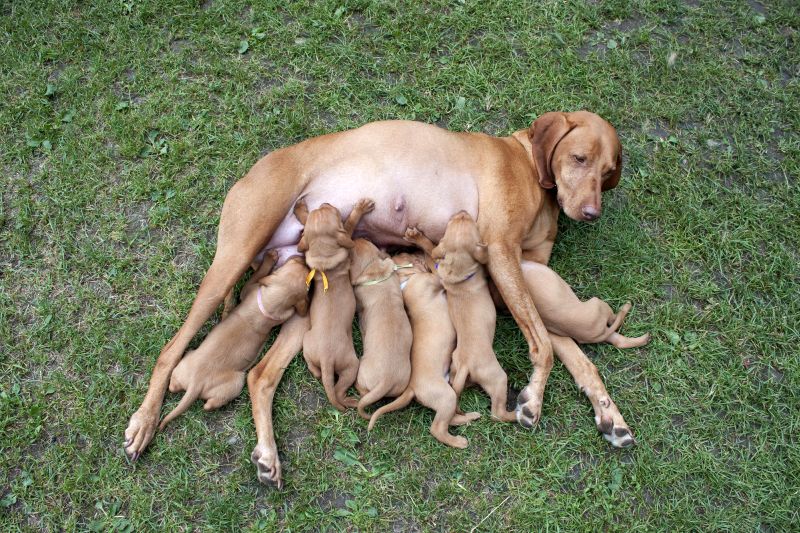
Toward the end of your dog’s pregnancy, your vet will likely be able to palpate the mom’s tummy or take an x-ray to determine an “exact” number of puppies in her belly (although it can be easy to miss one of the puppies, so you’ll never know for sure until the little wigglers start coming out).
This is the only way you’ll be able to know how many puppies your female dog may have. And to be honest, that’s probably what you care about anyway.
But there is some value in knowing a ballpark number to expect, even if your pregnant dog mom isn’t far enough along for your vet to determine how many little cuties she’s carrying.
A pretty exhaustive study of the topic was published in 2011. The researchers analyzed over 10,000 litters representing 224 breeds and found that the mean (average) litter size in this group was 5.4.
However, there’s a fair amount of variation at play. Miniature breeds typically produced litters of 3.5 puppies, while large breeds typically produced 7.1 puppies per litter.
What’s the Largest Litter Ever Recorded?
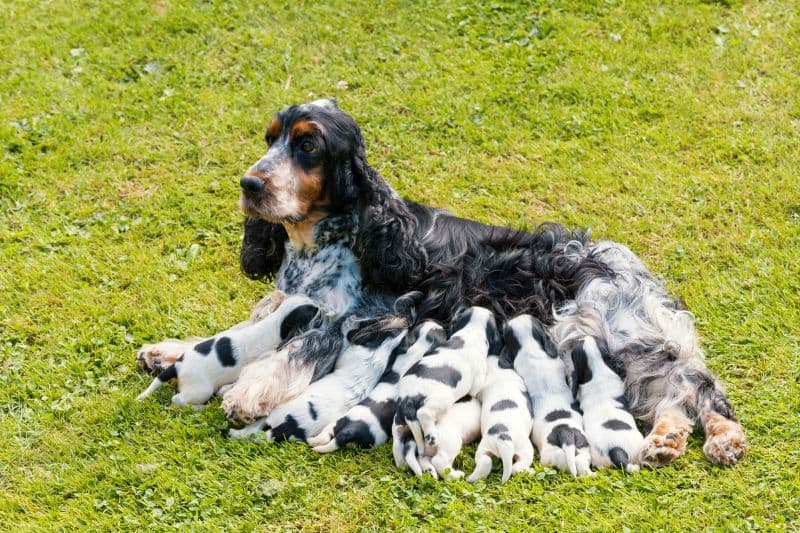
In 2004, a Neapolitan mastiff named Tia became the mother of the largest litter ever documented, when she delivered 24 puppies via Caesarian section.
This is obviously quite the anomaly, as most dogs produce much smaller litters than this. In fact, Neapolitan mastiff litters typically number between 6 and 10 puppies.
A few other notable cases involving huge litters include:
- A Springer Spaniel gave birth to 14 puppies in 2009.
- An Irish setter gave birth to 15 puppies in 2017 (on Mother’s Day, no less).
- A white German shepherd named Mosha gave birth to 17 puppies in 2015.
- In 2016, a Maremma sheepdog gave birth to a litter of 17 – which set the California state record for litter size.
- A bullmastiff produced a litter of 23 puppies in 2014.
- In 2014, a 3-year-old Great Dane gave birth to a litter of 19 puppies.
How Many Puppies Can a Dog Have: Factors Determining Litter Size
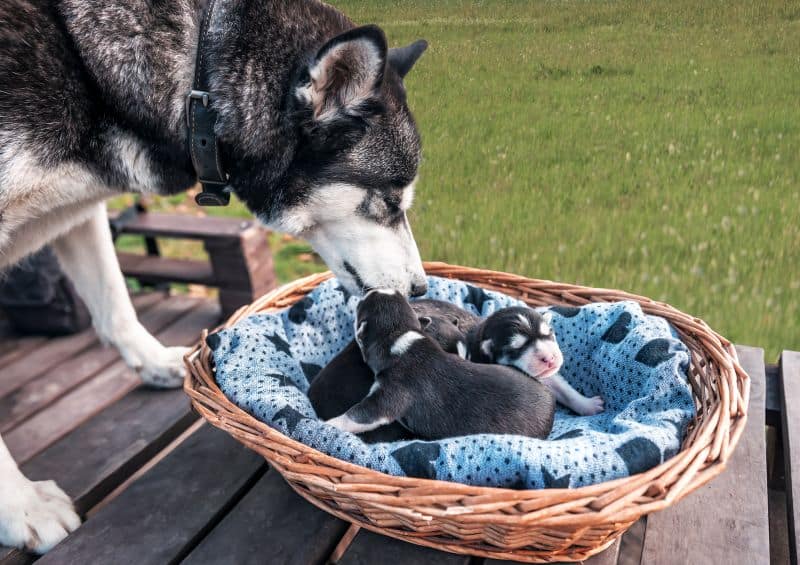
There are a number of different things that can influence the size of a dog’s litter, and we’ve detailed some of the most important ones below. It is difficult to empirically determine how much these various factors influence litter size, and it is likely that the various factors influence each other to some degree.
Breed
A dog’s breed is one of the most important factors influencing litter size. Simply put, larger breeds produce larger litters. That’s why shih tzus, Pomeranians and Chihuahuas have litters typically ranging from one to four puppies, while cani corsi, Great Danes, and other giant breeds often give birth to eight puppies or more.
Size
Within a given breed, individuals with larger body sizes (in terms of build, not weight) typically give birth to larger litters. For example, a 45-pound Labrador retriever may produce a litter of only five or six puppies, while an 85-pound Lab may produce a litter of 10 or more.

Age
While dogs typically remain fertile for their entire lives, they are most fecund during early adulthood – usually between 2 and 5 years of age.
However, a dog’s first litter is generally smaller than subsequent litters — she’ll likely have more puppies in subsequent litters.
Health
Dogs in good health are more likely to produce larger litters, and they’re also more likely to produce healthy puppies.
In fact, it is imperative that any female slated for breeding trials be in perfect health to ensure she and the puppies will survive the birthing and whelping process.
Diet
Diet likely has a strong influence on litter size.
Feeding your dog a nutritious, well-balanced diet will likely yield larger litter sizes than feeding a homemade or poor-quality food, which may decrease litter size.
Plus, proper nutrition will simply be better for both the mother and puppies.
Gene Pool Diversity
The smaller a dog’s gene pool is, the smaller her litters will tend to be; conversely, dogs who come from more diverse backgrounds tend to have larger litters. This means that dogs from lines that have been inbred extensively will slowly develop smaller and smaller litters.
Individual Genetic Factors
Dogs are all individuals, who vary in countless ways; sometimes, this can include litter size. This is very difficult to predict, but dogs who produce large first litters and likely to produce large second and third litters, assuming all other factors remain constant.
Note that most of these traits relate to the dam (female) rather than the sire (male). However, the sire does have some influence on the litter size. His health, age, and individual genetic makeup will partially determine the size of the litter he sires.
How Many Litters Can a Dog Produce in a Year?
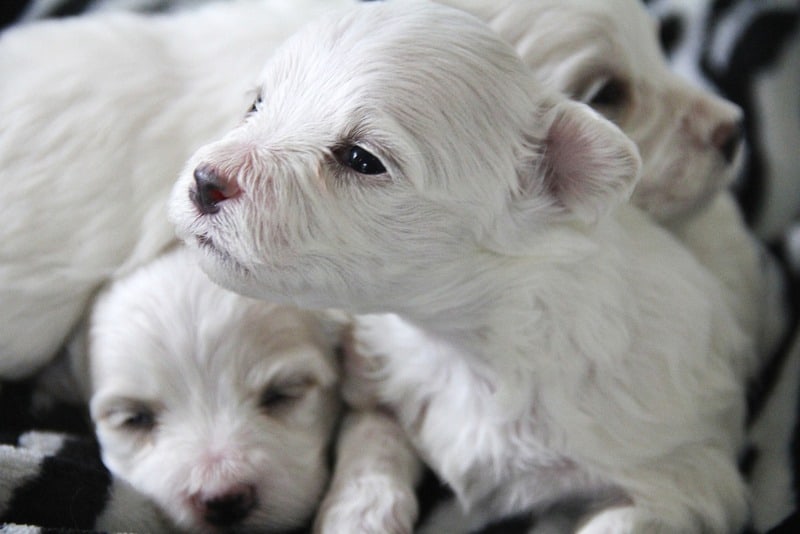
Some females can produce multiple litters within a 12-month period. It just depends on the dog’s natural cycle, body condition and the desires of the breeder. A handful of canines will cycle three or four times a year, but most dogs only have two cycles per year, spaced about six months apart.
But, breeding a female twice in the same year is frowned upon by many breeders. Doing so is very hard on the mom’s body, and many believe that it will result in a decline in the total number of puppies produced by a dog over her lifetime. Accordingly, many will allow their dog to produce a litter, and then give her a breather during her next heat cycle. This essentially means that they’ll produce one litter per year.
However, other breeders see no reason to avoid breeding dogs in heat, as long as they are healthy and in good physical condition.
In fact, breeders of this mindset often argue that because fertility decreases with age and most dogs will be six months older with every heat cycle, you can produce more puppies over the course of a female’s life by breeding in back-to-back heat cycles during the prime reproductive years of a dog’s life.
While dogs can produce quite a few litters over the course of their lives, it’s important to realize that each pregnancy takes a toll on a dog’s health. Accordingly, many conscientious breeders will only allow a given mom to produce a handful of litters.
Some breed registries may even reject registration applications if the mother dog has already produced too many litters. For example, The Kennel Club (the UK’s version of the AKC) may decline to register puppies produced by a mother who’s already produced four litters.
How Many Litters or Puppies Can Female Dogs Produce in a Lifetime?
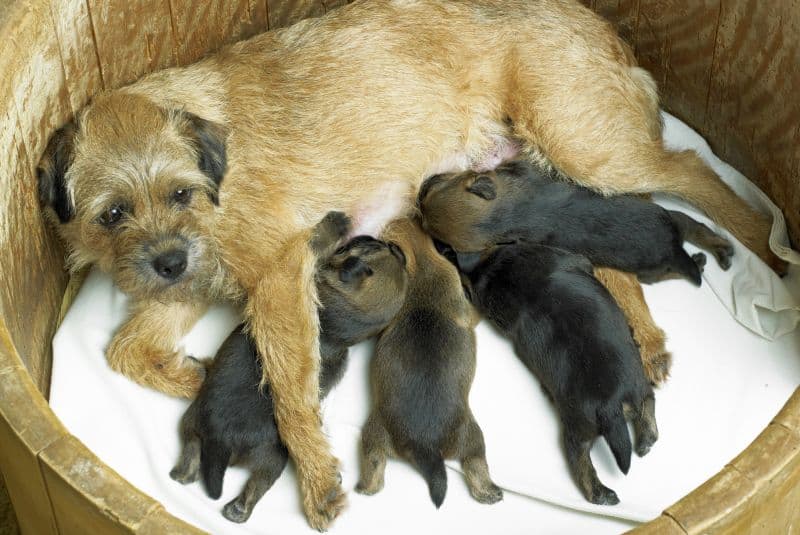
Theoretically, a single female dog could produce quite a few litters in her lifetime. Assuming that a female produced two litters per year starting at 1 year of age and continued doing so until she was 8 years of age, she’d produce 14 litters over her lifetime.
As previously mentioned, litter size varies based on a number of factors, but for argument’s sake, we’ll assume that she has about five puppies in each litter. That means that – again, theoretically — a single dog may be physically capable of producing upwards of 70 puppies(!) over the course of her life.
However, this would be madness.
Breeding a dog this many times would almost certainly compromise her health, and this type of pedal-to-the-metal breeding is more characteristic of puppy mills and unscrupulous breeders than conscientious breeders who value the well-being of their pups.
Additionally, some of the registration organizations will not allow you to register an unlimited number of litters. For example, the Kennel Club of the UK will only allow you to register up to six litters from a single mother.
What Breed Produces the Most Puppies?
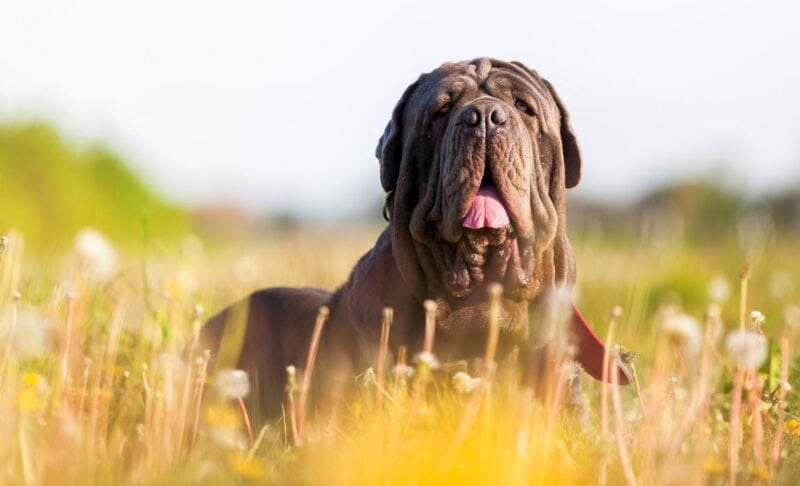
As mentioned earlier, a female dog’s size – and therefore her breed – is probably the most important single factor that influences litter size. Larger dogs produce larger litters, so it stands to reason that breeds with larger average size will produce more puppies than breeds with smaller average body size will.
Simply put, Great Danes will usually produce larger litters than Chihuahuas will. We can’t find a reliable study that has sought to determine which breed produces the litters containing the most puppies, but it is surely one of the largest ones, such as one of the mastiffs, Irish wolfhounds, or Great Danes.
However, it is a bit more difficult to determine which breed will usually produce the most puppies over the female’s entire lifetime. This is partially due to the fact that small dogs routinely live much longer than large breeds do. A Pomeranian may, for example, live to be 15 years of age, while Irish wolfhounds usually only live for about half as long, and therefore produce fewer puppies.
So, while the Pomeranian’s litters are likely to be much smaller than those of a wolfhound, the Pomeranian will have the chance to produce many more litters over the course of her life.
Additionally, small breeds tend to experience their first heat at a younger age than larger breeds do (sometimes an entire year earlier). They also tend to cycle more quickly, which also makes them more likely to produce more litters than larger breeds.
How Many Puppies Do Different Breeds Produce?

Interested to know how many puppies different dog breeds tend to produce? What about the largest litter size ever documented for different breeds?
We’ve got ya covered! Check out the table below to see the average litter size and the largest recorded litter size for the 20 most popular dog breeds.
| Breed | Average Litter Size | Largest Recorded Litter |
| French Bulldog | 3 | 13 |
| Labrador Retriever | 7 | 19 |
| Golden Retriever | 8 | 17 |
| German Shepherd Dog | 8 | 17 |
| Poodle | 7 | 16 |
| Dachshund | 5 | 11 |
| Bulldog | 4 | 16 |
| Beagle | 6 | 13 |
| Rottweiler | 8 | 18 |
| German Shorthaired Pointer | 9 | Unclear |
| Corgi | 7* | Unclear |
| Australian Shepherd | 7 | Unclear |
| Yorkshire Terrier | 3 | Unclear; several reports of 7 |
| Cavalier King Charles Spaniel | 4* | 12 |
| Doberman Pinscher | 7 | 18 |
| Cane Corso | 5* | 19 |
| Miniature Schnauzer | 4* | Unclear |
| Boxer | 7* | 15 |
| Great Dane | 9* | 21 |
| Shih Tzu | 3* | Unclear |
How Long Do Female Dogs Carry Puppies?
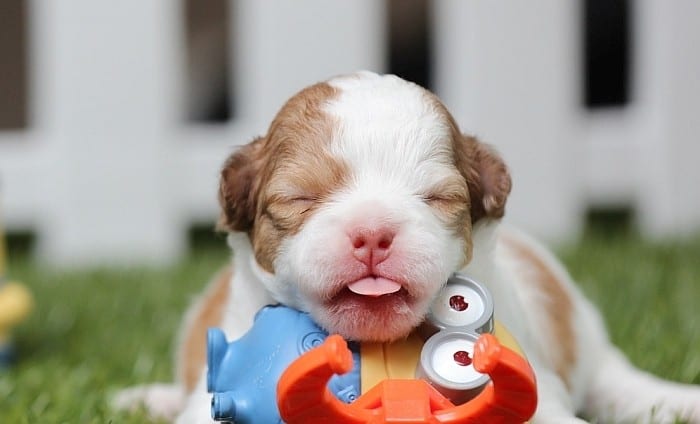
Pregnancy usually lasts about 58 to 68 days in dogs. This can vary based on a number of factors, including the female’s age and health, as well as her breed. It can also be difficult to determine the exact time of conception, which can introduce a bit more wiggle room into this figure.
But for most purposes, you can figure that your dog will be pregnant for about two months, or perhaps a bit longer.
What Are the First Signs of Pregnancy in a Dog?
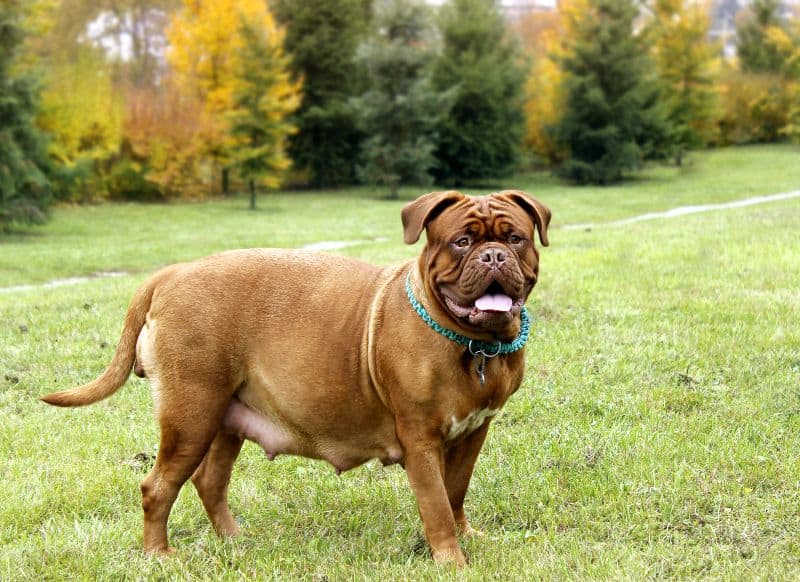
Unfortunately, there aren’t many early signs that will indicate that your dog is pregnant. In most cases, you’ll have to wait about three to four weeks before the signs of pregnancy become apparent.
Some of the most common signs that indicate a female dog is pregnant include:
- About one month after mating, your dog may produce a mucous-laden vaginal discharge.
- A pregnant dog’s teats will begin to swell and change color a bit about one month after mating.
- Some dogs will begin exuding a semi-clear fluid from their nipples about one month after mating.
- During the third or fourth week of pregnancy, many dogs experience “morning sickness.” This may include vomiting, changes in appetite, lethargy or behavioral changes.
- Around week four, your dog will likely begin to gain weight. Most dogs end up weighing about 50% more than their original weight by the end of the pregnancy.
- Around the 40th day of the pregnancy, your dog’s belly will likely begin to bulge a bit. However, this is not always obvious, particularly for dogs carrying small litters.
- Your dog will likely exhibit an increased appetite during the second half of the pregnancy.
Of course, if you suspect (or hope) that your dog is pregnant, the best way to know for sure is to make a trip to the vet. Most breeders recommend visiting the vet about two to three weeks following mating anyway.
By the 21st day of your dog’s pregnancy, your vet should be able to verify that she’s pregnant via a blood test. It is also possible to start visualizing the puppies via ultrasound around this time (perhaps a few days later).
There is also a small window of time – between the 28th and 35th day of pregnancy – when your vet can safely palpate your dog’s abdomen. This will allow him or her to verify that there are puppies in her uterus. Note that this is a very delicate procedure, which should not be carried out by those who haven’t been trained to do so. Rough handling of the developing babies may injure them or trigger a miscarriage.
By day 45, your vet can X-ray the mother to see the developing babies. This will not only allow the vet to count the number of puppies present, but to inspect their bone structure and note any abnormalities.
First Time Mothers: What to Expect
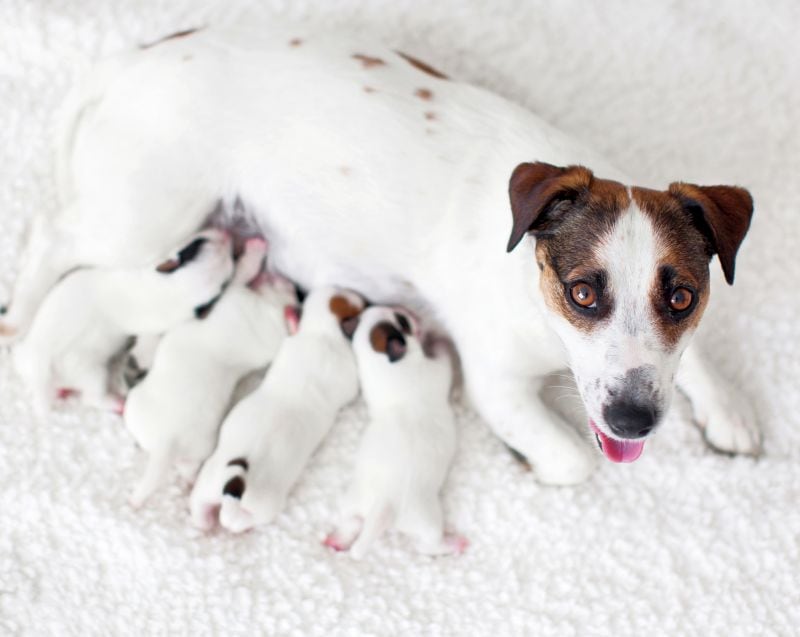
While most female dogs are excellent mothers for their second, third and subsequent litters, first-time moms often have a bit of trouble figuring things out. Accordingly, you’ll want to keep a very close eye on first-time moms and be a responsible pet owner to make sure everything goes smoothly and that she does all of the things a good mom should.
For example, you’ll want to be sure that all of the puppies are finding nipples and getting enough food to keep their bellies full and bodies warm. You’ll also want to make sure that the mom remains healthy and happy throughout the process – if she starts having health-related or emotional problems during the whelping process, the puppies are likely to suffer.
Fortunately, as mentioned earlier, a first dog litter is generally pretty small. For example, dogs from breeds who typically produce litters of five puppies may only produce one or two for their first litter. This makes it much easier to keep an eye on everybody and nip problems in the bud.
Life History and Litter Size
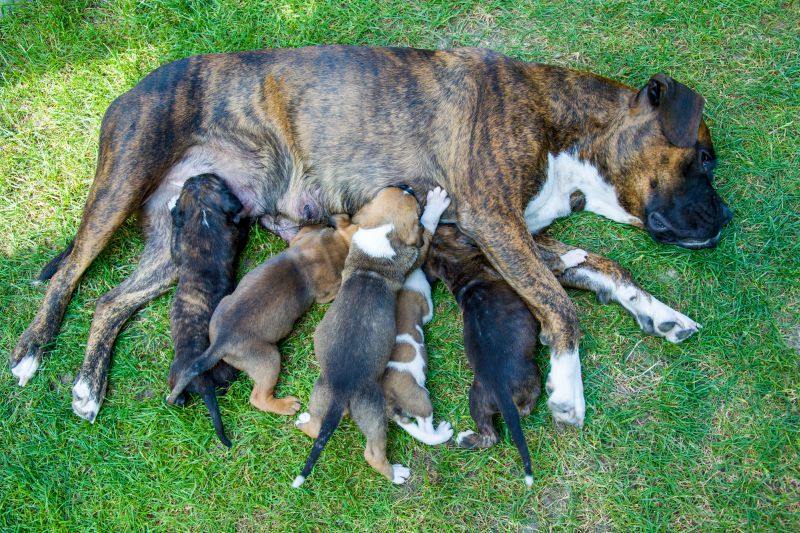
Large litters may seem like a beneficial adaptation for any species, but in practice, things are rarely so simple.
In fact, litter size (or clutch size, as it’s called in egg-laying species) is a very important factor in the evolution of animals. Most of the time, evolutionary pressures result in the most appropriate litter size for a species’ life history and survival strategy.
For example, some animals – humans, elephants, and hippopotami are a few of the best examples – typically give birth to very small litters, consisting of one or two individuals. These animals live long lives, have high survival rates and typically invest a lot of resources and effort into each offspring.
At the other end of the spectrum, other mammals produce huge litters of tiny babies. For example, the tailless tenrec – a bizarre insect-eating mammal from Madagascar – usually gives birth to about 15 babies, but litters numbering more than 30 have been documented. These animals have high mortality rates, live relatively short lives, and invest relatively few resources in each individual offspring.
Dogs fall somewhere between these two ends of the spectrum, as the average litter size across all breeds is about five. They invest a moderate amount of resources in each offspring and live moderately long lives.
The One-Half Rule
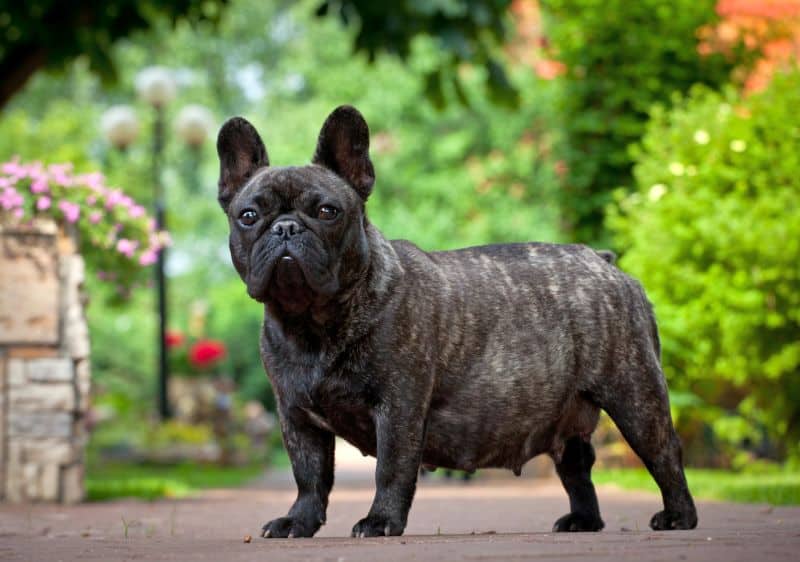
The various processes shaping litter size also influence the number of nipples that a species has. As a general trend, the maximum litter size usually matches the total number of nipples present, yet the average litter size is usually about half of the number of nipples available.
Humans are a great example: Most mothers give birth to a single baby, although twins aren’t all that uncommon. This helps to ensure there are enough nipples to go around, and it even provides some protection in the case that some of the mother’s nipples fail to function properly.
The one-half rule is pretty reliable for dogs too. Most dogs have eight to 10 nipples, and the average litter size is about five.
But understand that this is a statistical correlation, not a way by which you can predict the number of puppies your individual dog will have. So, stop being a weirdo and counting your dog’s nipples and just scratch her behind the ears like she wants.
She’s a good puppy-wuppy, yes she is.
How Many Puppies Do Dogs Have: FAQ
Still have questions about how many puppies dogs can or do have? We’ll try to help by answering some of the most common questions below!
How many puppies can a dog have her first time?
There’s no hard limit to the number of puppies female dogs can have in their first litter, but most first litters are smaller than is typical for a given breed. For example, dog breeds who normally produce five puppies per litter may only give birth to one or two for their first litter.
Which dog breed has the most puppies?
There is no simple answer to this question, as a variety of things influence litter size besides a dog’s breed. The current record for litter size is held by a Neapolitan mastiff, who produced 24 puppies (it should be noted that these dogs were delivered by Caesarian section).
Nevertheless, large breeds tend to produce larger litters than small breeds.
Can a dog have up to 20 puppies?
Yes, in very rare cases, dogs have produced litters of 20 puppies or more.
What determines how many puppies are in a litter?
A variety of factors influence litter size, including the breed, age, and overall health of the female dog in question, as well as genetic factors.
How long is a dog pregnant for?
Most dogs are pregnant for 58 to 68 days.
What is the largest litter ever recorded?
A Neapolitan mastiff named Tia (full name Abellatino Arabella) produced 24 puppies in 2004. Unfortunately, one of the puppies was stillborn and three others died in their first week of life.
I once had a relatively small chocolate lab who produced a litter of 9 and a litter of 10, which proved to be quite the handful. I can’t imagine having to care for 15 or 20 newborn puppies wiggling around in a whelping box. In those kinds of situations, puppy milk replacement formulas and feeding devices are pretty essential for keeping the full litter alive (and not driving poor mom out of her mind).
Tell us about your puppy litter experiences. Have you ever had a dog that produced a huge litter? How did the whelping process go? How many puppies were in the dog litter? Let us know all about it in the comments below!





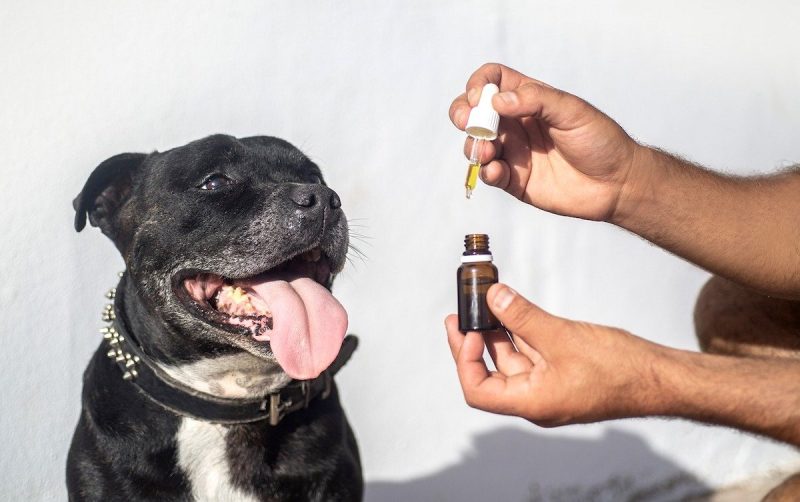
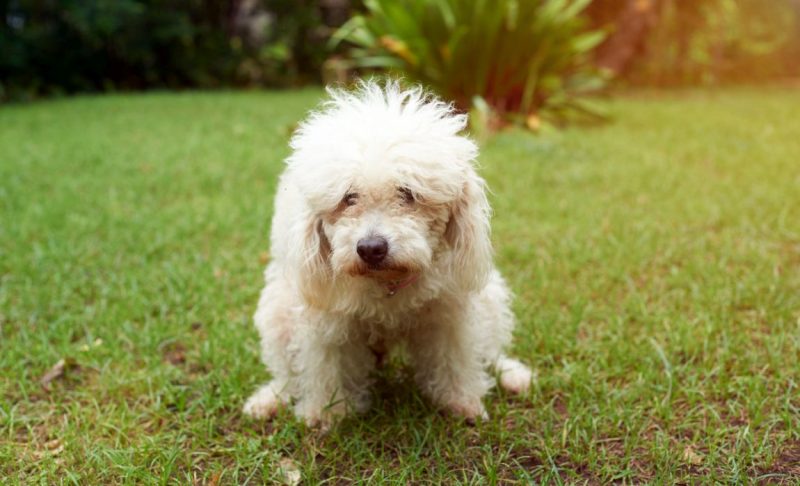
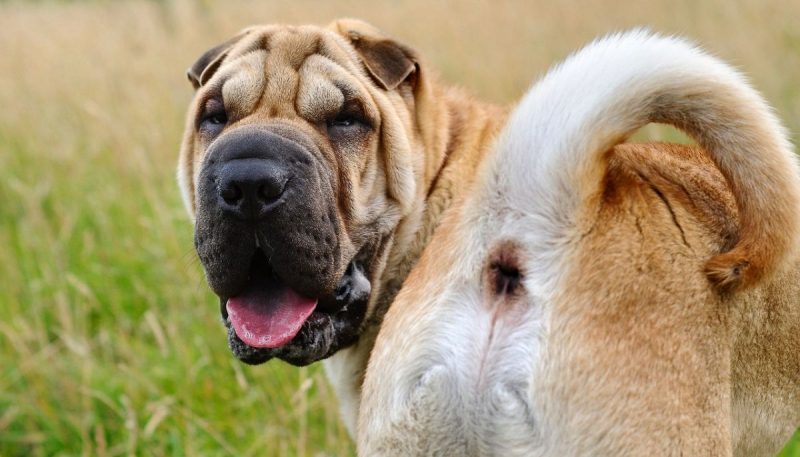

Leave a Comment